


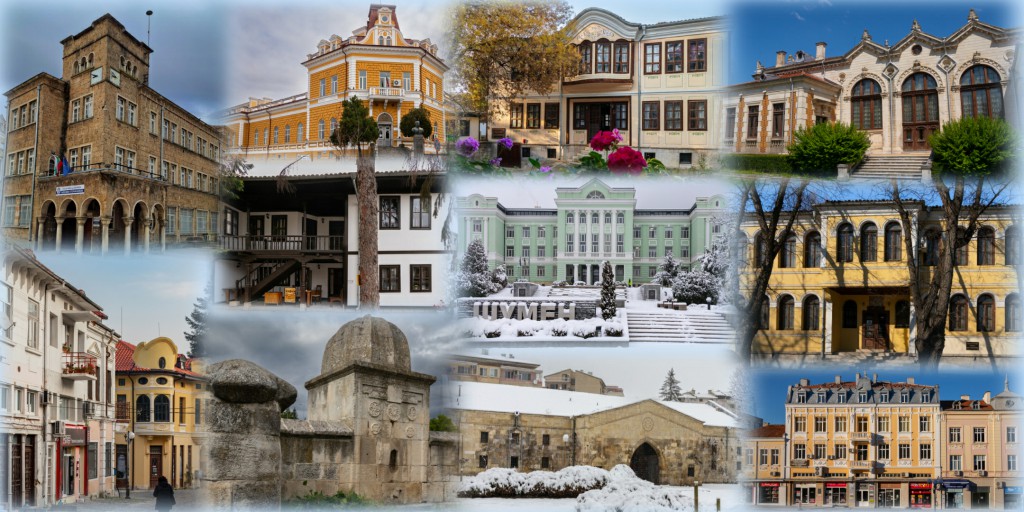

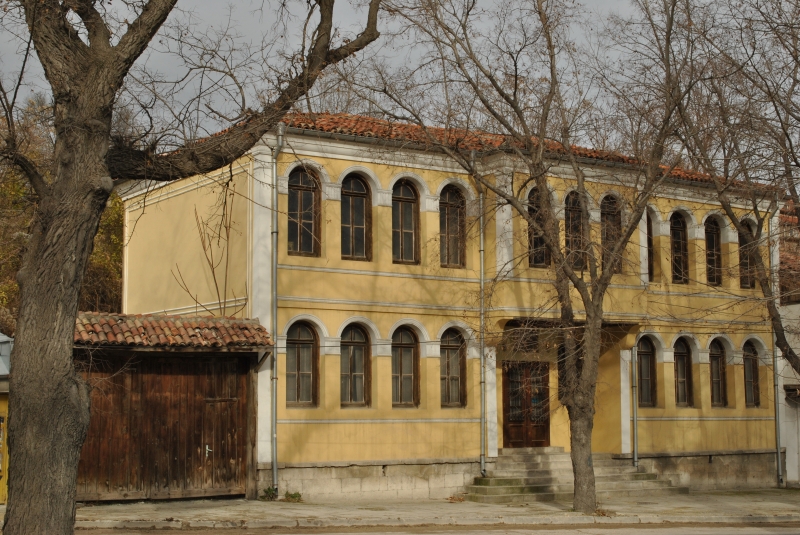

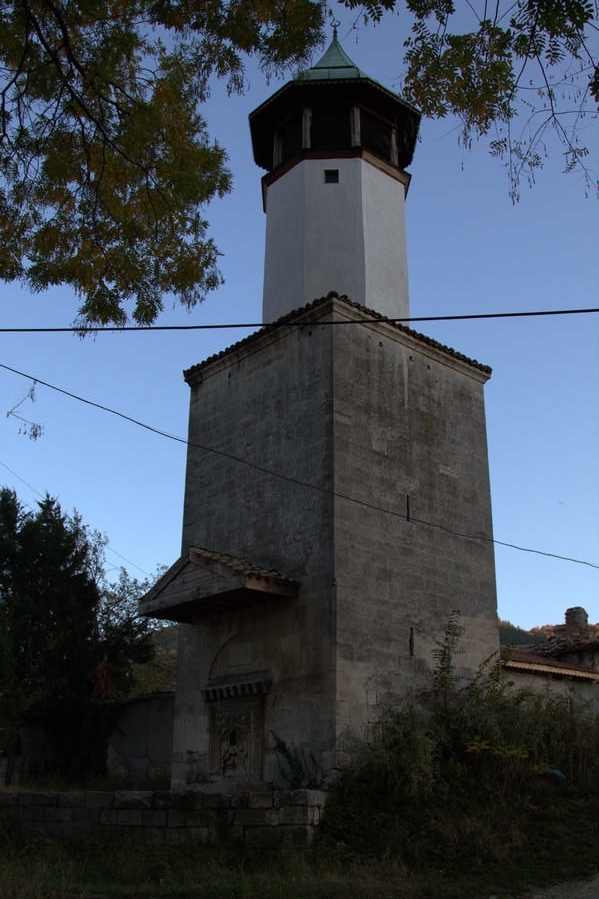
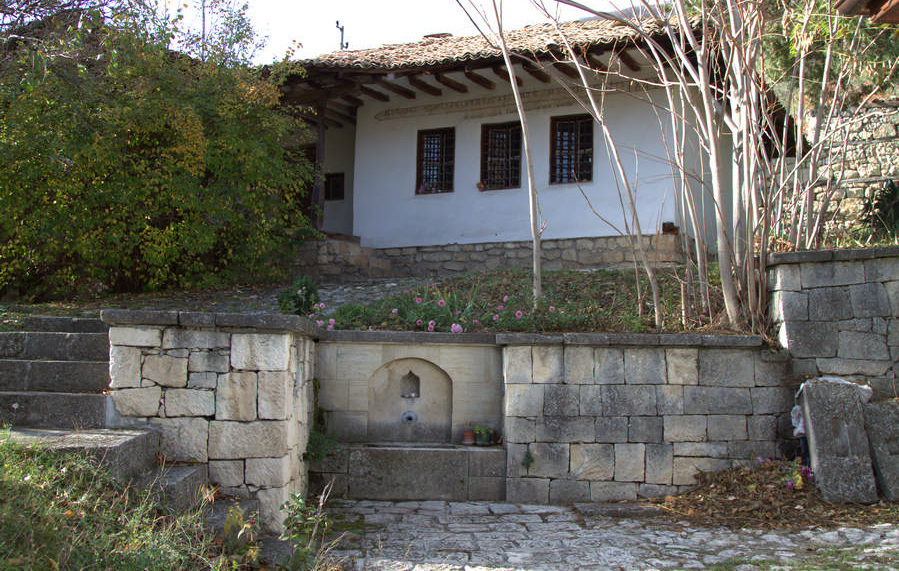
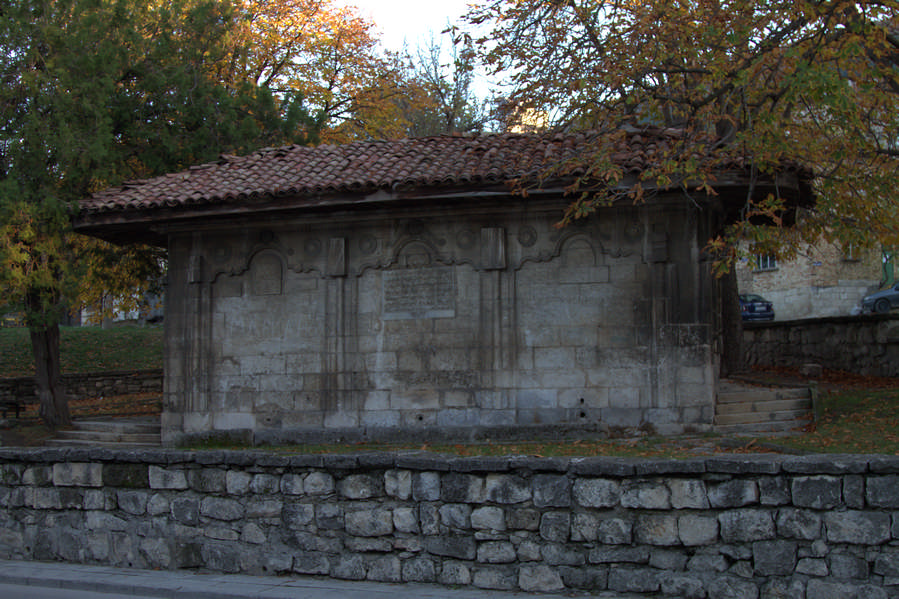
Community center Dobri Voinikov was founded in the spring of 1856 by Sava Dobroplodni, and boasts about its 150 years of cultural history. Along with other community centres in Svishtov and Lom it lays the basis of community and cultural activity in Bulgaria. A performance of the adapted comedy “Mihail Mishkoed” on August 15th 1856 lays the foundations of Bulgarian theater, as well as to the Art gallery, the artists’ and the writers’ society through Mayakovski literary club. The first musical theater performed in 1914 was the beginning of Bulgarian musical theater. The first Bulgarian library for children also opened doors in this community center.
The first theatre curtain from 1898, created by Viennese painters is also kept here. Shumen has a great contribution in the development of Bulgarian culture.
The building was designed by the French architect Mercier and built in 1898. Its architecture is a combination of several different architectural styles: Renaissance, Baroque and Secession, еnriched with with elements of Classicism.
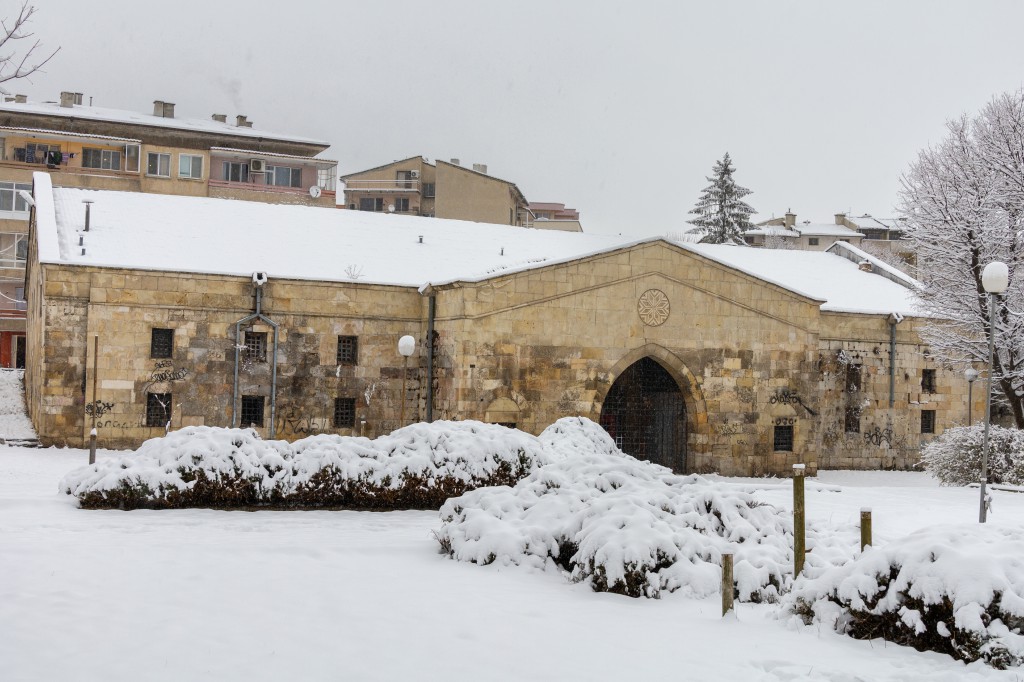
Bezisten is a cultural monument belonging to the period of the late Middle Ages.
Traders from Dubrovnik constructed the building in 1529 for their own needs. Once it was located in the very centre of Shumen, very close to Tombul mosque. Its name comes from Persian and means “covered market”. It was built with stone blocks. Plant, geometric and hand-written signs can be seen on its surface. In different time periods the building used to function as a covered market, weapons storage place and restaurant.
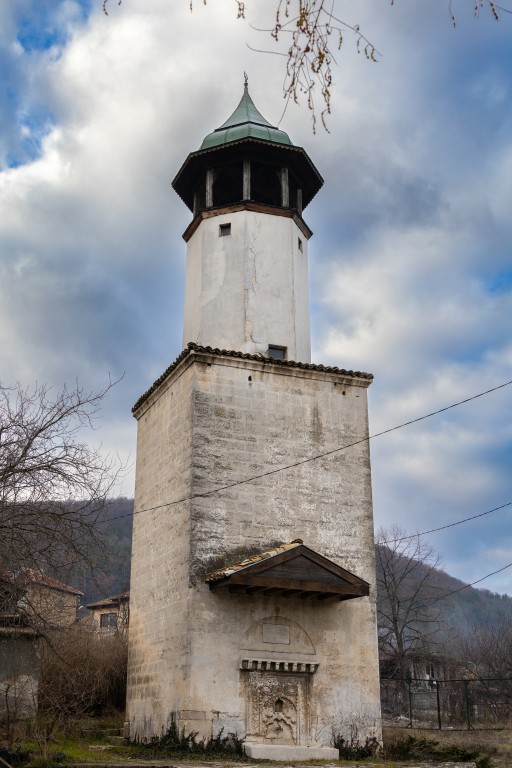
Among all clock towers from 17th c., the Tower of the Old Clock in Shumen is one of the oldest in Bulgaria. The verse written inscription carved in 1740 on its surface is one of the most impressive clock tower signs, enchanting with its witty and poetic narrative. The tower has a simplified clock mechanism which has worked non-stop for more than 270 years. The sound of a ringing bell used to count round the clock the working hours and they were observed strictly by all shopkeepers.
There’s a built-in fountain within its foundations – an eternal symbol of life meaning “water is the liveliest thing that exists”. At the same time, Tombul Mosque was constructed at the opposite side of Poroyna river. Because of the presence of the clock, the mosque was temporarily called “Sahat camisi”.
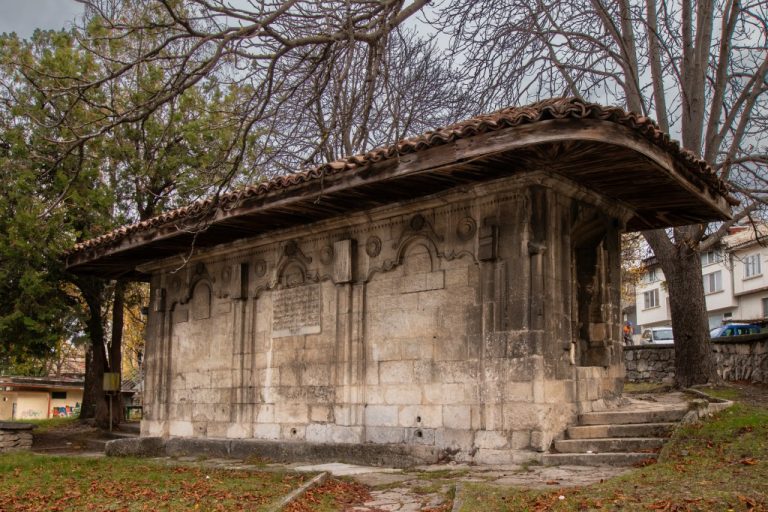
This is one of the most beautiful water fountains that dates back to the Ottoman period.
It was built in 1744 by limestone ashlar stone, and has a richly ornated facade. Initially it was covered with lead tiles where its original name came from. The Arabic for lead is “kurshun”. There are words in Ottoman language carved in the fountain that mean: “What a spring is this – similar to the spring of paradise, what a fountain is this – similar to the fountain of paradise. The building is as beautiful as paradise, and the water is more precious than living water.” According to the legend, the sultan decided to stop the wars and bloodshed, so he ordered the bullets to be melted down and the lead to be used to make the tiles for the fountain’s roof.
147 Syedinenie Str.
The Big (Father’s) Water Fountain
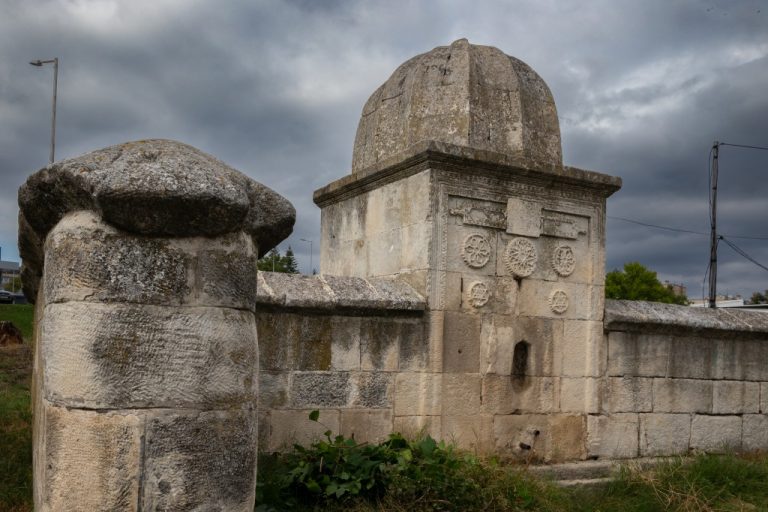
This fountain is in Balgaranov’s district, that was built before the Ottoman rule by Bulgarians who lived there until the 16th century. The fountain is believed to be built in 1688, and typical for this area. It is 2 m tall and carved with ornaments. This style is very typical of the Turkish fountains. Unfortunately, it does not function at the moment but it is a precious architectural site.

The house was built before 1870 and was included as part of its owner’s testament together with a vineyard and a garden for the maintenance of the first school for girls in Bulgaria. It has been there for 20 years until 1890. The people of Shumen named the school after the donor Andrey Rankov. People of Shumen call it the Teacher’s House.
68, Simeon Veliki Blvd
The church school (a school with tiny, cell-like rooms, built for religious education during the Ottoman rule) is among the first Bulgarian revival schools completely preserved in Bulgaria. It is located in the church’s yard, built the same year аs the church in 1846.
A video of the school: https://www.youtube.com/watch?v=IVDSNRYNqus
Kiliyno uchilishte Street
Tel. +359/ 899 803 882

Built in 19thc the house was owned by the wealthy local merchant Hadji Verbi. In 1876 his eldest son Evtim Verby graduated with a medicine degree from Athens University and worked as a military doctor. His other sons Peter and Dimitar were also famous doctors and had significant contribution to healthcare. There is the famous cafeteria Cufetaria where you can enjoy the traditional coffee on sand with a spoon of special white marmelade.
154 Tzar Osvoboditel Str.
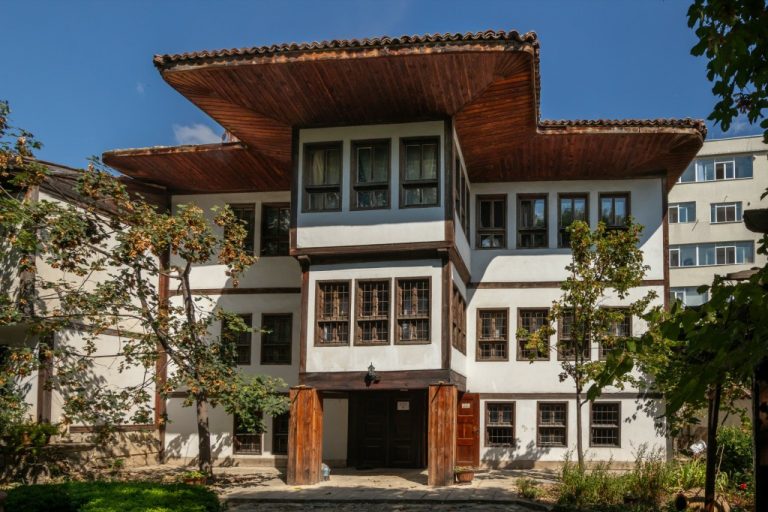
This house belonged to an Armenian merchant and is one and only of its kind, acompletely preserved, three- storey building from the middle of the 19th c.
Address: 14 Stara Planina Str.
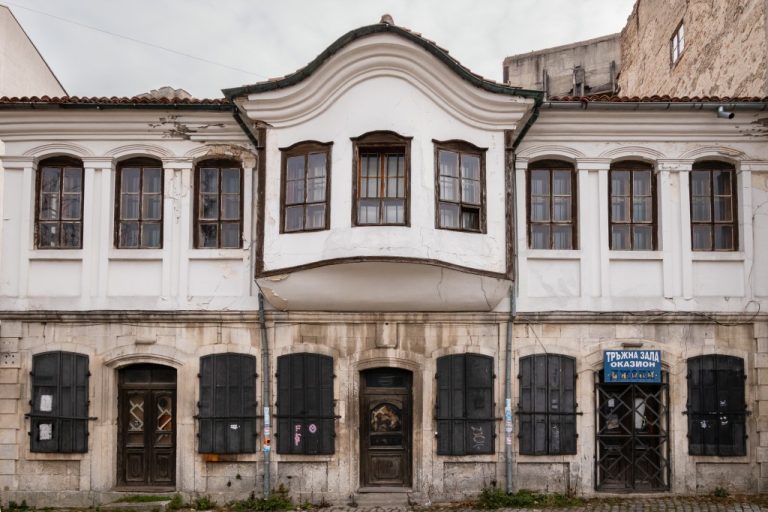
That is one of the two houses owned by the Kutsarovi brothers. The house is symmetrical on two floors with a bow – window, built at street level around 1872. The ground floor has massive walls of stone. There were three shops with same dimensions therein. They had different functions and their doors and windows were equipped with iron shutters. A school for girls was based in the one of them. A Hungarian chemist named Georgi Silagi opened here a pharmacy furnished and arranged according to the European model. In the beginning of 20th c., here was also the fashion shop of Bula Brenberg. It is the Home of the Union of the Bulgarian Architects since the 1980s.
145, Tsar Osvoboditel Street

This house belonged to a merchant’s family. According to the legend, here was the first town hall in Shumen.
140 Tzar Osvoboditel Str.
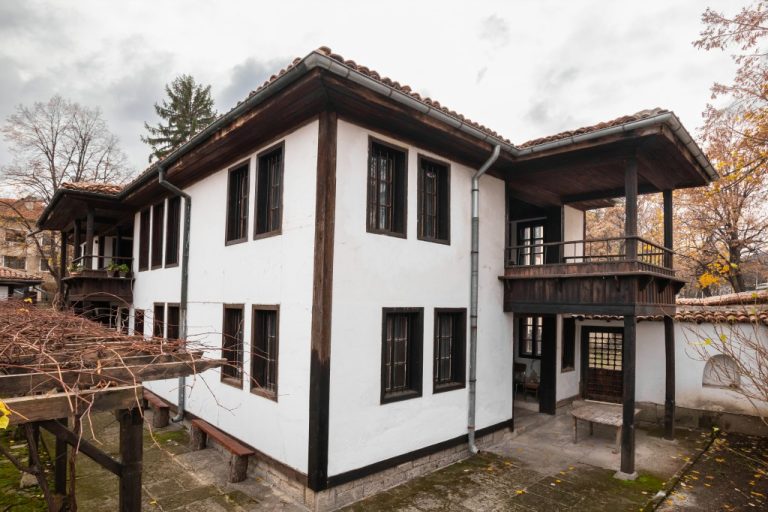
Built in the first quarter of 19th c, this was the house of a rich trader who was a mayor before the Liberation.
152 Tzar Osvoboditel Str.
Baba Rayna’s House

Baba Rayna’s house was built in 1850. Baba Rayna was one of the founders of the girls’ pedagogy school. The house has a secret passage. Nowadays, it is used for cultural events.
The military club

The military club is one of the most remarkable buildings in Shumen. It was built around 1901-1903. There is a huge dance hall inside that was used for military balls and later for ballroom dancing. Nowadays, the military club is used for different types of dance rehearsals, trainings and performances, such as salsa, modern dancing and Bulgarian folklore.
Address: 17, Slavyansky blvd.
The courthouse
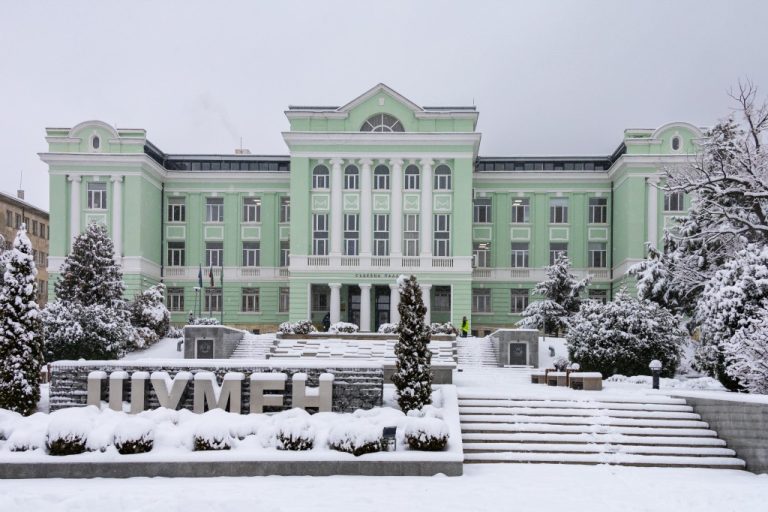
This is one of the most beautiful buildings in Shumen. It was opened around 1925 to serve as a Town hall. Nowadays, it is a courthouse.
Address: 70, “Saedinenie” str.
Police department
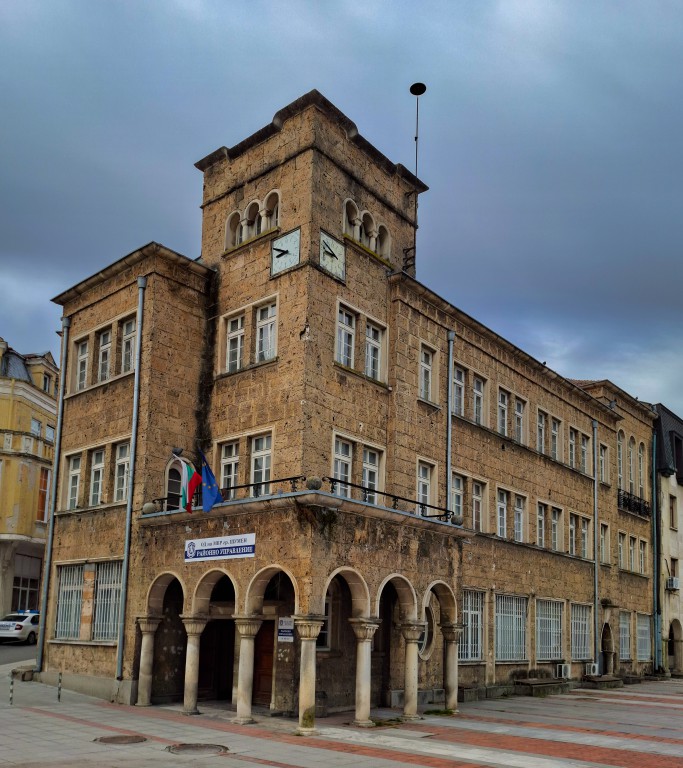
At first, this building was used for administrative purposes. Over time, it was adapted for the needs of the Ministry of Internal affairs and nowadays it is a police department. The building is an outstanding example of the architectural modernism of the 1930s – a style that reflects the characteristic features of public buildings from the period between World War I and World War II. Its facade has been preserved in its original form, making it a recognizable part of the urban landscape.
Address: 2, San Stefano Str
Hotel Ticha
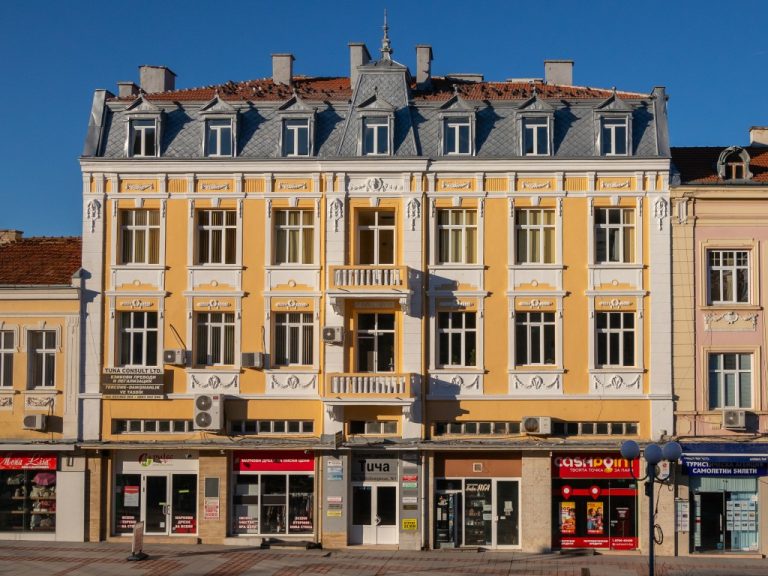
This remarkable architectural jewel is created by Toma Varhota, a famous architect from Shumen. It was designed to be a hotel and it opened on 1st January 1914. Hotel Ticha was extremely modern for its time: with 34 rooms, running water, its own beer hall and a Viennese salon. Later, until 1940s, this building was a home to a bookshop, that belonged to Petar Kanchev, a local publisher. Nowadays, it still functions as a hotel.
Address: 1, Osvobojdenie Square
Useful links
Shoumen Municipality Ministry of Tourism Consumer Protection Commission Regional Historical Museum - Shoumen Vasil Droumev Drama and Puppet Theatre Sinfonietta Shoumen Elena Karamihaylova Art Gallery Anastas Stoyanov Personal Development Support Centre – Municipal Children Complex Stylian Chilingirov Regional Library Arena Shoumen HallTourist Information Center - Shumen Telephone: +359 54 857 773
All rights reserved © 2025г.
Web Design - Dankanic Creative





